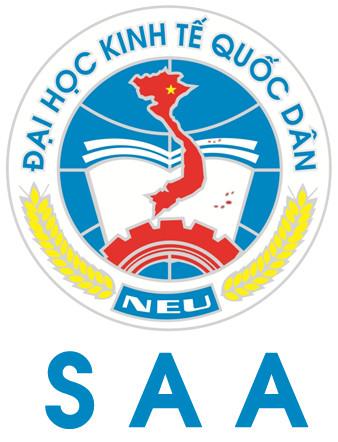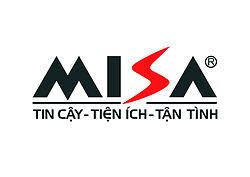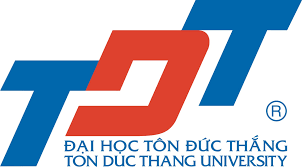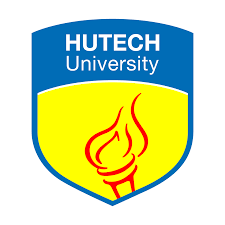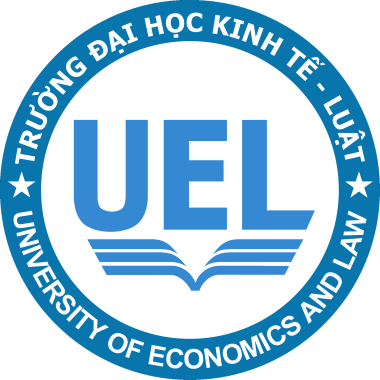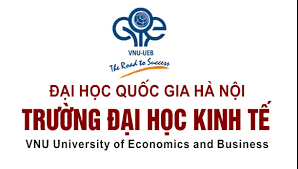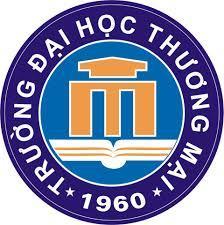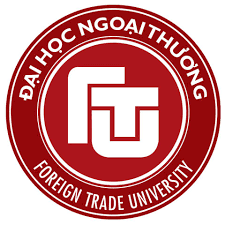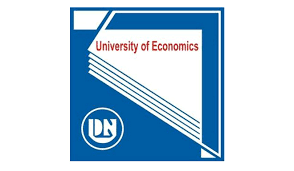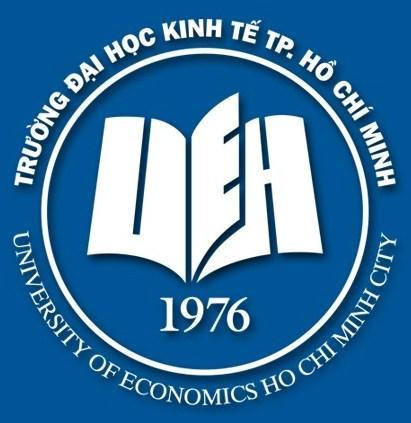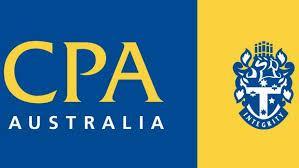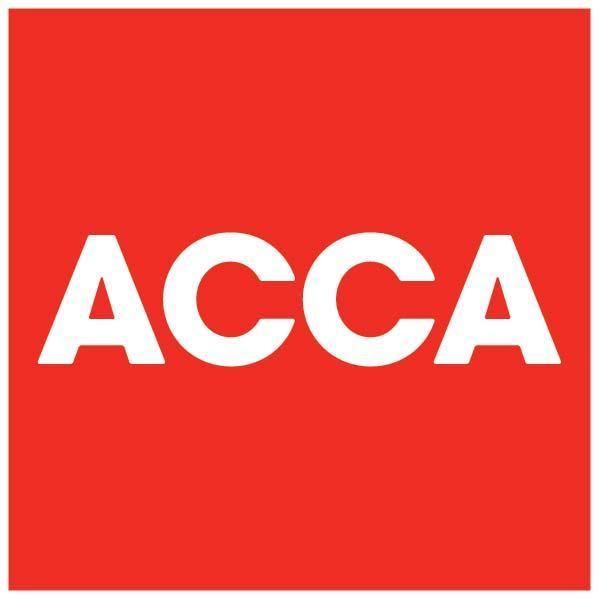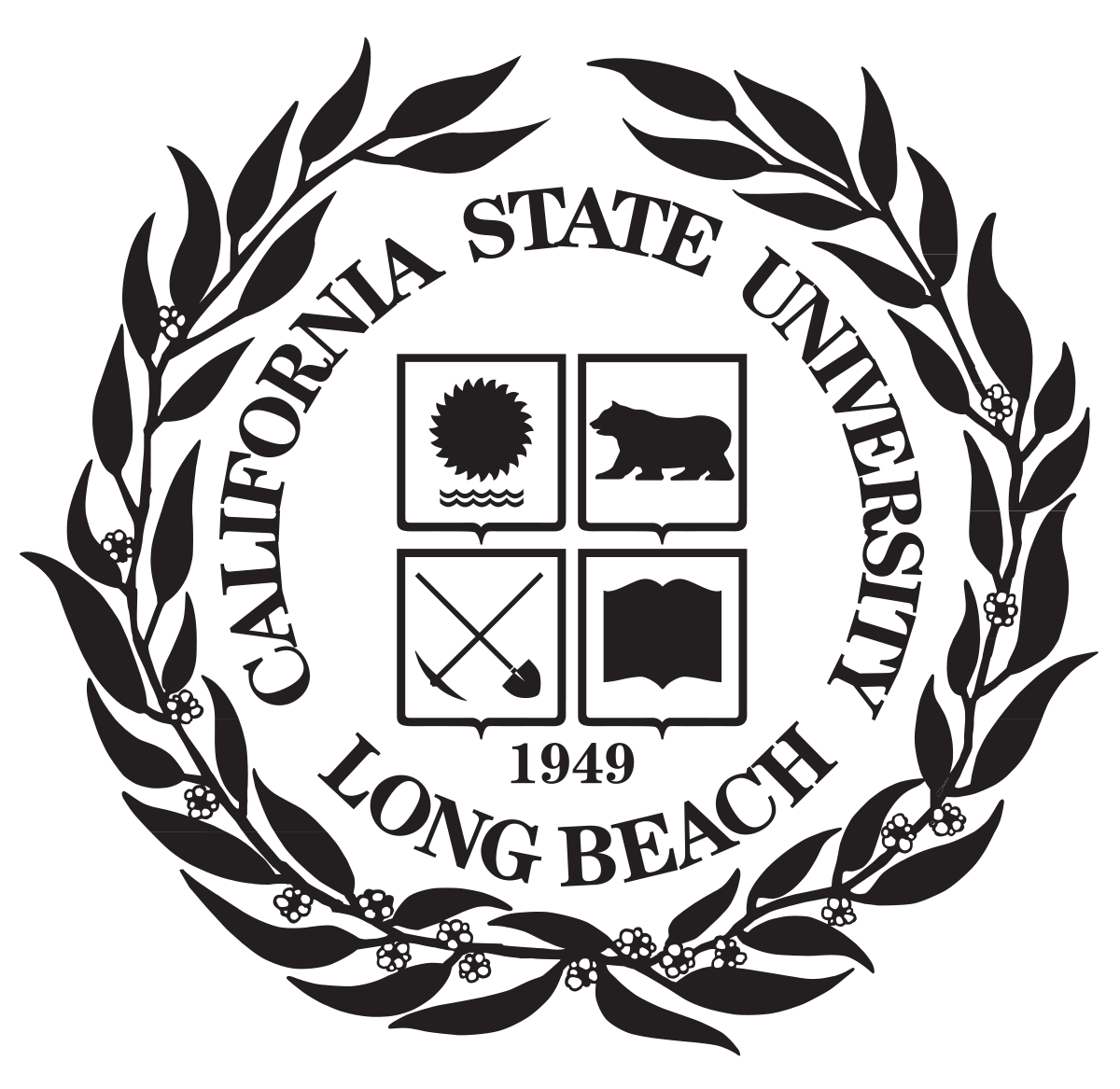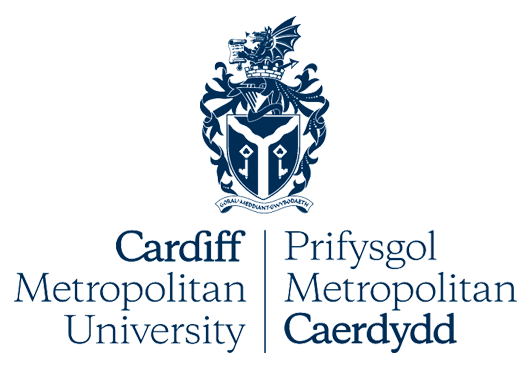Corporate Governance and Agency Cost: Empirical Evidence from Vietnam
Anh Huu Nguyen, Duong Thuy Doan And Linh Ha Nguyen
School of Accounting and Auditing, National Economics University, 207 Giai Phong Road, Hanoi, Vietnam
Abstract
This study examines the impact of corporate governance, reflecting a wide spectrum of board characteristics and ownership structure on agency costs in 281 listed companies on Ho Chi Minh Stock Exchange (HOSE) in Vietnam in the period 2013–2018. For this purpose, three board characteristics were chosen: (1) the size of board of directors, (2) equilibrium between non-executive and executive members of the board of directors, (3) the CEO chair duality and three types of ownership structures were chosen: (1) management ownership, (2) government ownership, (3) foreign ownership. An inverse proxy of agency costs is used: asset utilization ratio (asset turnover), which reflects the managerial efficiency. The research methodology includes three statistical approaches: Ordinary least squares (OLS), fixed effects model (FEM) and random effects model (REM) are considered to employ to address econometric issues and to improve the accuracy of the regression coefficients. The results can create effective corporate governance mechanisms in controlling the managerial opportunistic behavior to lower agency conflicts, and hence lower agency costs.
Keywords: corporate governance; agency cost; ownership structure; board characteristics
1. Introduction
Agency cost is the internal expense resulting from conflicts of interest between principals and agents in an organization; it is hidden in any decision which is not aimed at maximizing company profit. Agents refer to the managers of the company, working on behalf of shareholders. Because shareholders are unable to regularly control every activity of managers in the company, it results in asymmetric information, which can cause ethical risks and lack of consensus. It is the spirit of agency cost theory, according to
Jensen and Meckling (
1976). The answer for how to reduce agency problem lies in the management and supervisory system of the company. In other words, the useful and effective corporate governance mechanisms may help to control the rift between the management and shareholders (
Sehrawat et al. 2019).
Mehmood et al. (
2019) stated that for South Asian countries, good and efficient governance mechanisms can minimize agency costs because investors, especially institutional investors, tend to invest in companies which are well governed. Good corporate governance refers to the well-structured system in management processes, policies, laws and customs that help companies to control their operations. It focusses on the right of shareholders and reduces the diversion of their interests (
Monks and Minow 2004).
In recent years, there have been many studies examining the benefit conflicts arising between dispersed shareholders and powerful managers when the management structure is changed. The results showed that company needs to delete any source of organizational inefficiency and build up a mechanism that protect shareholders’ wealth (
Damodaran 2014). According to
Core et al. (
1999), companies are likely to deal with a higher level of agency cost with a poor structure of corporate governance, in which powerful management teams can perform acts disfavoring shareholders’ benefits, to achieve managerial self-interest. One of the important research in developed countries worth mentioning is
Ang et al. (
2000), who used a sample of 1708 small US companies to measure agency costs under different ownership structures. Using two alternative efficiency ratios: the operating expense ratio and the asset utilization ratio, to measure agency costs, this study found that agency costs increase when an outsider manages the firm. Additionally, agency costs decrease as the ownership is more concentrated. In addition, for small companies, external monitoring by banks may reduce agency costs, because banks will lead and control firms to operate more efficiently. Bank incentive of monitoring is calculated by the number of banks used by the firm and the length of the relationship between the firm and its primary bank.
Henry (
2010) addressed the relation of corporate governance and agency cost under the impact of the Principles of Good Corporate Governance and Best Practice Recommendation issued in 2003 for Australian Securities Exchange (ASX) listed companies. The study compared the corporate structures before (1992 to 2002) and after the Code of Practice was introduced. The results showed that the adjustment in corporate governance required by the ASX Corporate Governance Council in force significantly reduced agency costs.
This paper is motivated by the characteristics of agency theory of different types and the level of corporate governance in practice driven by culture and the legal system. Therefore, the purpose of this paper is to investigate the association between corporate governance and agency cost by empirically analyzing the determinants of agency cost in Vietnamese listed companies, a dynamic market with complicated corporate governance system due to the effects of politic and economic structure transformation. In order to keep up with the integration of the global economy, corporate governance requirement in Vietnam is adjusted and improved rapidly. For example, Decree 71 on Vietnam Corporate Governance in 2017 applicable to public companies required that at least one third of the members of the board of directors be independent members and an independent auditing board is required in the board of directors. In addition, the increasing reform of Vietnamese state-ownership enterprises in recent years under the Trans-Pacific Partnership (TPP) agreement and negotiations on the Free Trade Agreement (FTA) with the European Union enable companies to change in ownership and organizational structures. Using a sample of 281 listed companies on Ho Chi Minh Stock Exchange in Vietnam in the period from 2013 to 2018, we applied corporate governance, including board size, the number of non-executive director, CEO/Chairman duality, management ownership, foreign ownership, government ownership, as tools for monitoring agency costs based on asset utilization. Besides, we use control variables including firm size, debt to ratio and firm performance. The robust fixed effect results confirm corporate governance influence on agency costs; with suitable corporate characteristics, the agency costs can be reduced. The findings of this paper reveal that even though Vietnam experiences the same type of agency problem with market-based financial systems, the characteristics of corporate governance in Vietnam are the result of it being an emerging market, leading to some differences in the effects of agency costs, compared to other economies.
2. Literature Review
The principle and agent relationship was first mentioned in Wealth of Nation by
Smith (
1776), in which he stated that the managers cannot watch over their company with the same vigilance as in sole traders or partnerships where managers also are owners. The separation of ownership and control in companies has continued to draw the attention of researchers throughout the world. They have assumed that both principals and agents are motivated by self-interest and such separation exists at different levels (
Berle and Gardiner 1933).
Jensen and Meckling (
1976), who first introduced agency problem term, stated that this relationship is a contract by which the principal hires the agent to perform on their behalf, delegating to the agent some decision-making authority. The role of the principal is not to control upstream or plan strategies for the company; it intervenes to limit the discretional power of the agent, and ensure that the agent performs in compliance with the contract. On the other hand, agents with control and power have the incentive and ability to maximize their own self-interest at the expense of principles.
Jensen and Meckling (
1976) define this relationship as the most similar to an owner and a manager in a company. However, they cannot deny that agency relationships or agency theory may take other forms. Beyond the classic conflict of manager versus owners, there are conflicts of relationship between controlling shareholders and minority shareholders, or in some circumstances, even shareholders and creditors, employees and employers, etc.
Focused on agency problems generated by managers, shareholders cannot regularly supervise the activities of managers, and hence are not able to fully understand the real situation behind critical business decisions. For example, shareholders tend to expect high dividend payouts for extra cash and increases in the current value of capital share that they hold. However, managers with close access to relevant information tend to have greater risk appetite. Therefore, they may want to retain a large part of profits to acquire more critical assets or develop in technology. This leads to different risk perspectives and business goals. This disagreement between outsider shareholders and management teams can cause inefficiency, and even losses for the company. In numerous circumstances, with the advantage of information, managers seek profits that increase their own wealth, which leads to ethical risks and decision-making conflicts. To reduce these conflicts, shareholders need to observe and monitor managers’ action through clear communication and solid corporate policy. In other words, there should be a regulation of legislations to improve the control of the shareholders over the Board of Directors.
Corporate governance was mentioned in the 1990s, with the Cadbury reports in 1992, the Greenbury report in 1995, and the Hampel report in 1998. In 1999, the OECD published, for the first time, the principles of corporate governance with key standards to address: the roles and responsibilities of shareholders, boards of directors, timely and accurate disclosure of information. Besides, countries tend to build their own Corporate Governance Code and require listed companies to apply or explain of non-compliance. With the mechanisms of accountability, transparency and accountability through supervision and oversight, best practice of corporate governance can increase the communication and trust of shareholders to managers. It means that understanding this mechanism can help reduce the agency problem between owners and managers.
The relationship between corporate governance and agency cost is also confirmed by some papers. Some noticeable investigation regard to this as follows:
A theoretical study of agency cost and ownership structure was conducted by
Fama (
1980) and showed that the owners of companies include individuals, groups, governments and institutions who have different interests, goals and capabilities.
In a company with the completed separation of ownership and management, the owners are not involved in the company operation. Managers who have more information about the company’s financial position and performance most probably use their power to profit for themselves.
Brickley et al. (
1997) argued that compared to individual, institutional shareholders are capable and have more incentive to act as controllers and monitors in the company, thus reducing agency costs.
Doukas et al. (
2005) used the data of 1027 UK firms over the 1998–2000 period to evaluate the monitoring power of security analysts, in terms of shareholder and management conflicts. It also used a set of control variables including ownership structure, leverage and firm size. As a result, this study found the positive effects of security analysts on reducing agency costs, especially in smaller firms. It finds that larger firms are more complex when it comes to assessment and that it makes the monitoring activity of security analysis less effective. Besides, the larger firms are subject to greater information asymmetries compared to smaller firms, which leads to a greater level of agency costs. However, this study used a dummy variable of the interaction of growth opportunities and its free cash flows to measure agency costs. Other agency cost measurements should also be considered, such as asset turnover, operating expense, etc.
Moez (
2018) determined the relationship between corporate governance and agency cost by analyzing 125 French companies from 2000 to 2015 divided into different sectors. The results showed that controlling shareholders who have significant shares of the company have enough power and incentive to monitor and influence managers. They may interfere in managers’ decisions by voting against their proposals or expressing their disagreement and selling their shares. Additionally, dividend policy was found to be a useful tool to mitigate agency conflicts.
Vijayakumaran (
2019) obtained 1420 publicly listed non-financial companies on the Shanghai and Shenzhen Stock Exchange from 2003 to 2010 to analyze the impact of ownership board characteristics and debt financing on agency costs. A GMM system was used to deal with unobserved firm characteristics and endogeneity. The paper stated that the higher management ownership and debt financing represented good corporate governance, hence eliminating agency costs, while board characteristics such as board size and the number of non-executive directors do not affect to agency cost. Additionally, with the positive and significant estimated coefficient of firm size and asset utilization ratio as agency cost proxy, the results showed that the larger a company is, the lower the agency problem is. The reasons could be that a larger company has more resources, and is able to influence shareholders’ judgements and behaviors, resulting in them acting to favor personal interests and violating moral principles.
When it comes to agency costs measurement, there are three ways that frequently appear in the accounting and finance literature, including asset turnover, the ratio of administration, selling expenses, and the divergence between cash flow right and voting right. The utilization of method depends on the type of agency problems and the ownership structure characteristics in each country (
Boardman et al. 1997). The conflict between principal and agent can be divided into two types. The agency problem of type 1 refers to the shareholder and management conflicts, which is more common in reality. Type 2 refers to the problems between controlling shareholders and minority shareholders (
Shapiro 2005).
According to
Hong et al. (
2017), if a company has a pyramidal or cross-shareholdings structure, there is a strong possibility that the shareholders’ voting rights, such as authority to elect the board of directors, or decision-making approval and cash flow rights (ownership rights) such as claiming dividends, are different. In other words, the conflicts of the controlling shareholders and minority shareholder occur because the voting right (control right) does not match the cash flow right (ownership right). The theory of corporate governance requires that there is a balance between control and ownership, which implies that any shareholder has equal control and ownership rights to the same cash flow. Therefore, the separation of voting rights and cash flow rights possibly exacerbates the difference in preferential rate among shareholders, which leads to agency problem type 2 (
DePamphilis 2019). To specify, in some countries such as Japan, Korea, Germany and Italy, companies tend to apply a cross-sharing holding structure and it means the ownership power is focused on a group of institutional shareholders.
Cross holding has existed for a long time in Japan, where the financial system is bank-based. It means that banks are the most important sources of business finance after retained earnings. Banks hold equity, as well as debt, in businesses—normally their client firms, and vice versa; businesses hold equity in banks also. Therefore, bank ownership becomes an important role in corporate governance mechanisms in Japan. It is involved in business strategic decisions by having seats on the board and becomes a useful resource if there are financial problems (
Morck et al. 2000). In other words, bank ownership may improve financial performance, because in this system, it acts as a monitor and guarantor for businesses. Centralized ownership in a special group of shareholders (banks or other large industrial firms) aims to build a long-term relationship, establish trust and loyalty among institutional shareholders, such as keiretsu in Japan or chaebol in Korea, which results in the agency problem type 2 (
Norli et al. 2015). In this situation, the wedge of voting right and cash flow right is suitable to measure agency costs. However, in fact, most bank-based systems are becoming market-oriented by issuing new regulatory ceiling ownership by individual banks and other financial institutions, because cross holding creates certain difficulties in operating activities to ensure the transparency and anti-monopoly of markets (
Morck et al. 2000).
On the other hand, in countries such as the UK and the US with a market based financial system, companies tend to suffer agency problem type 1, because the disclosure quality and minority shareholder protection are emphasized. The empirical evidence by previous studies such as
Ang et al. (
2000) and
Singh and Davidson (
2003) used the asset turnover, ratio of selling and administrative expense to sale, as proxies for agency costs type 1. The former can be interpreted as an asset utilization, calculated by dividing the total revenue by the total assets. This ratio shows the effectiveness of the management boards, including the board of directors and chief account in exploiting and using company assets. A company with low agency costs will effectively use their assets. Therefore, this ratio is an inverse proxy of agency cost. The second ratio is expense ratio, which reflects management discretion behavior in spending company resources. The top end of this ratio may express the over-allocation on salaries, commissions or non-productive activities. Therefore, companies with high expense ratios are expected to suffer higher agency costs.
In the context of Vietnam, the cross ownership appeared in Vietnam from 1990, when Vietnam just started having commercial banks; banks needed to be linked and support capital for each other to expand business. From this point, there were cross holding activities between banks, financial institutions and firms in Vietnam. However, aware of the significant negative impact of cross holding, Vietnam proceeded with the anti-monopoly act and activities to reduce and eliminate any cross-ownership matrices in banks and businesses. In the Company Act 2014, there is regulation on investment restrictions. A controlled state-owned company cannot invest capital or buy shares of a company holding the controlling right within an economic group (
Dang et al. 2018;
Le and Tannous 2017). Besides, subsidiaries are also not allowed to invest capital in the parent companies or equitized units under the same group. Furthermore, commercial banks in Vietnam cannot use capitals or contribute capital to their institutional shareholders. It can be seen that these are clearly specified prohibiting acts of capital contribution between the parent company and its subsidiaries, hence leading to the limit of cross holding in Vietnam. Because of these reasons, in Vietnam, it is supposed that the agency cost type 1 is more common than type 2. We consider applying the asset turnover or operating expense ratios to measure agency costs type 1 in this study.
Although they use the same measurement method, the level of agency cost and especially the corporate governance mechanism between developing countries like Vietnam and developed countries like the UK and US are likely different. Therefore, to reduce the agency problem, the characteristics of corporate governance in Vietnam still need to be investigated.
2.1. Board Size
There are many studies on whether board size will affect agency problems. Many people believe that the bigger the size is, the greater the board performance is. The large board of directors can be helpful in bringing together expertise and advice regarding strategic options, and the shareholders can receive more business performance information according to
Monks and Minow (
2004),
Uadiale (
2010). However, opposing views stated that bigger board size leads to problems in cooperation and communication of board of directors, which in turn increases agency costs (
Lipton and Lorsch 1992;
Jensen 1993;
Eisenberg et al. 1998). Building up the size of board of directors will incur coordination costs due to schedule conflicts and fully member meeting difficulties. It will result in a consensus of solving common company problems and a delay of decision-making. The presence of many members of Board of directors makes the cohesion weak because of members’ different views.
Jensen (
1993) investigated that when the board size increases beyond a certain point, the disadvantages probably outweigh the benefits that a board of directors offers. The optimal number of board members is probably 7 or 8, while
Lipton and Lorsch (
1992) proposed that the corresponding figure should be 8 or 9 members.
Vijayakumaran (
2019) stated that with the data of listed non-financial companies on the Shanghai and Shenzhen Stock Exchange from 2003 to 2010, due to lack of time on necessary issue consideration, members of large boards of directors tend to follow one or two dominant members. Therefore, smaller boards outperform larger boards, in order to ensure shareholders’ interests and minimize agency cost in the Chinese businesses.
The majority of US previous papers about board size and firm performance stated a negative relation. It means that for US companies, the smaller the board size, the better firm performance is, which helps reduce agency problems (
Cheng et al. 2008;
Coles et al. 2008). Studies in UK market also showed similar results of positive relation between board size and agency costs. The reason is that UK boards have roles that are advisory rather than monitoring, in which a smaller board can do a better job.
Following the previous literature, we can summarize that whether smaller or bigger board size is better depends on company characteristics and national institutional characteristics which dictate differences in the board of director function. In this paper, we contribute to the predominantly US and UK based literature and expect that:
Hypothesis 1 (H1).
There is a positive correlation between board size and agency costs.
2.2. Independence of Board Member
Several studies stated that the board of directors, including executive and non-executive directors with diverging motivations, is set up to support and control the management team, in which the latter do not take part in daily management of the business but engage in strategy planning and policy making. Non-executive directors are likely to work for shareholders’ interest thanks to their independence from company management activities (
Brown et al. 2011). Additionally, if executive directors are in charge of business tasks, such as production, sales, finance, etc., they will not be able to fulfill their role as supervisor, but will be affected by interest from managers. Therefore, a company needs to create a mechanism that includes non-executive directors who are outside of the company to control and monitor the behavior of the management team, especially the Chef Executive Officer (CEO) and other executive directors.
Most of the research from developed markets such as the UK and US to emerging economies like China and India stated that the independence of the board member plays an important role in limiting and controlling agency problems. The studies of
McKnight and Weir (
2009) and
Henry (
2010) have consistent results that indicate that boards with a significant percentage of non-executive directors can reduce the exercise of managerial discretion, because boards dominated by external directors are more likely to act effectively in shareholders’ interests, in order to protect their reputation in front of shareholders.
In Vietnam, the majority of previous papers also found that board independence increase firm performance, and with such effective independent directors, we assume that this may lead to reduced agency costs (
Vo and Nguyen 2014). Only few Vietnamese studies have found different results. For example, research by
Nguyen et al. (
2017) supports the hypothesis about the negative relationship between board independence and firm performance. In other words, independent directors, due to expertise disadvantage, may not complete their monitoring function in governance, hence possibly leading to a greater agency problem and worse firm performance. However, this research focused on firms where the state is controlling shareholders. Therefore, with the overall economy in Vietnam, we expect that:
Hypothesis 2 (H2).
There is a negative relationship between board independence and agency cost.
2.3. CEO/Chair Duality
Another important feature of board characteristics is CEO/Chair duality, which indicates whether or not the CEO also serves as chairman of the board of directors.
Fama and Jensen (
1983) theoretically argued that the establishment of the Chairman concurrently holding the position of CEO helps to streamline the organization structure, then may reduce the conflicts in business decision-making. In Vietnam, according to
Dang et al. (
2018), companies with CEO/Chairman duality can be more efficient, because when the manager is the owner of the company, the information asymmetry will be minimized. The agency cost may not be a problem, as the CEO tends to work in shareholders’ interests.
The empirical evidence is mixed.
Ibrahim and Abdul (
2011) examined 290 listed companies in Malaysia from 1999 to 2005 and found out that depending on the level of family ownership, the effect of duality is different on agency cost. To specify, family ownership companies have less agency problem when dual position exists. By contrast, dual position can lead to higher agency costs in non-family ownership companies.
Others pointed out that when the chairman becomes the person who makes strategic decision, and then supervises and directly implements those decisions, this person may have too much power over decision-making. Because of his own perks and benefits as a CEO, he may be biased and unduly influenced to override business judgements. Companies should also separate these distinct jobs into internal check and controls (
Conyon and He 2012). For this reason, this separation is to ensure the objectivity in assessing the performance of the management team. In Vietnam,
Dang et al. (
2018) supported the statement that the separation between those positions can help reduce agency cost.
Considering previous literature reviews, we pose the following hypothesis:
Hypothesis 3 (H3).
Companies with CEO and Chairman duality may have lower agency cost.
2.4. Management Ownership
Singh and Davidson (
2003) investigated that the relationship between management ownership and agency cost can be non-linear. In other words, with increasing levels of management ownership, managers and outside shareholders’ interests are aligned, but when this level reaches a certain point, the managers with too much power just focus on collect private benefit. They tend to build their own empires or use their power to enjoy perks. The entrenchment effect will dominate the incentive alignment effect.
However,
Vijayakumaran (
2019) showed evidence of service listed companies in the Chinese Securities Exchange that, when management teams hold an appropriate percentage of company share, can align the interest between these two groups, because higher shareholding from the managers means that their wealth and benefits are closer to the interest of company owners, which resolves managers’ moral hazard problems. This incentive alignment can be via stock options, preferences compensation and actions through equity ownership. It stated that, in this period, there has been a significant rise in the management ownership in China to reduce shareholder and management conflicts. This study supports the results of
Ang et al. (
2000),
McKnight and Weir (
2009). These studies showed that in the US and UK economies, the agency costs are inversely related to manager ownership share. To support the US and UK based literature, we use the percentage of shares owned by all directors and managers and hypothesize that:
Hypothesis 4 (H4).
There is a negative relationship between management ownership and agency costs.
2.5. Government Ownership
In relation to government ownership,
Berglund (
2020) argued that in companies where the government owns the majority of equity, the government has an incentive and expertise to control the company closely and effectively at a lower cost, thus improving profitability and reducing agency cost.
However,
Vijayakumaran (
2019),
Tian and Estrin (
2007), and
Wei et al. (
2005) argued that the government tends to be less proactive in controlling its investment. Additionally, because they can easily get financial funding, state-owned companies have a poorer corporate control mechanism, which in other words will increase agency costs. In the context of Vietnam, according to
Phung and Mishra (
2016), the reason for this relationship is that these state-owned companies pursue both political and social objectives. The managers can use these goals as an excuse to violate management and ethical principles, which leads to heavy losses, not only for the government owner, but also for the public interest. They use government subsidies and bribes as a tool in circumventing public policies for private gain. In other words, the government ownership reduces firm performance, whilst also increasing agency cost. We therefore hypothesize that:
Hypothesis 5 (H5).
There is a positive relationship between government ownership and agency cost.
2.6. Foreign Ownership
Ownership by foreign investors also has an effect on company agency cost.
Xu and Wang (
1999) pointed out that Chinese firms with a higher proportion of foreign investors have better control in management activities, which in turn results in higher company performance and lower agency cost. For emerging markets, compared to domestic shareholders, with the expertise and practice business knowledge, foreign investors play an important role in effectively monitoring and correctly managing discretions according to
Lu and Li (
2019) and
Vijayakumaran (
2019). In particular, when foreign investors invest in a company, they take time to comprehend the different international and cultural contexts, to avoid business risks and protect their investment, which increases financial transparency. The company also receives international standards of governance and technology to operate effectively and honestly. In line with the above statement, we hypothesize that:
Hypothesis 6 (H6).
There is a negative relationship between foreign ownership and agency costs.
Besides the relationship with ownership structure and board characteristics, agency costs are also influenced by other factors in a company.
Ang et al. (
2000) concluded that agency costs tend to decrease with the increasing control from creditors. It means that the debt to asset ratio is inversely correlated to agency cost. With the level of debt increase, the managers have to seek for maximizing outcome, hence reducing agency problems.
Doukas et al. (
2005), in their study, said that when a company grows larger, the number of managers and shareholders increases, and this may weaken the internal and external corporate governance mechanisms. However, others argued that a larger firm size represents its capability to access resource such as finance, human, expertise, etc. Besides, with a better reputation with banks and creditors, larger firms are more likely to reduce information asymmetric problems (
Ang et al. 2000). Furthermore,
Fama (
1980) stated that there is a strongly negative correlation between firm performance and agency costs. In this paper, we decide to use ROA to measure firm performance.




